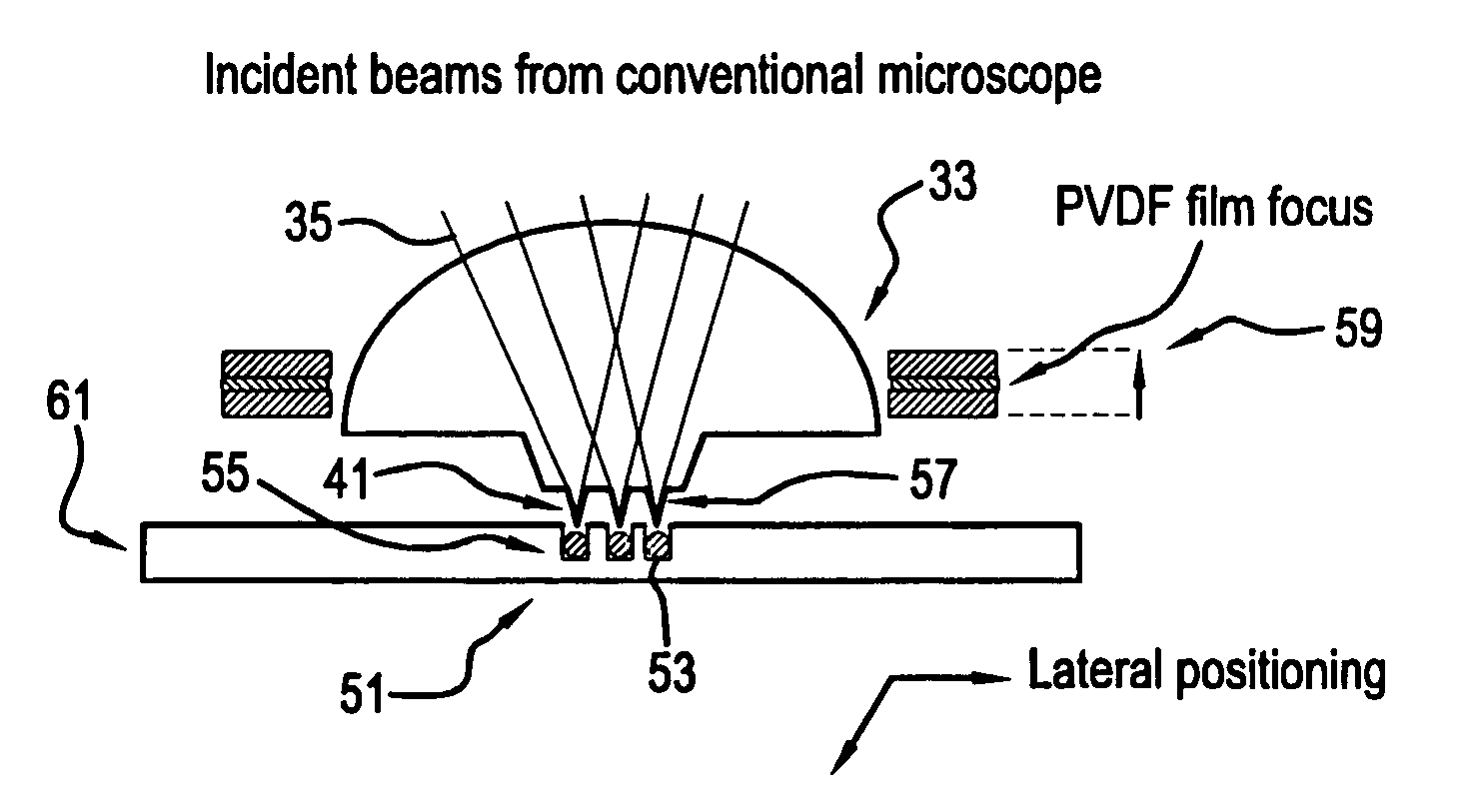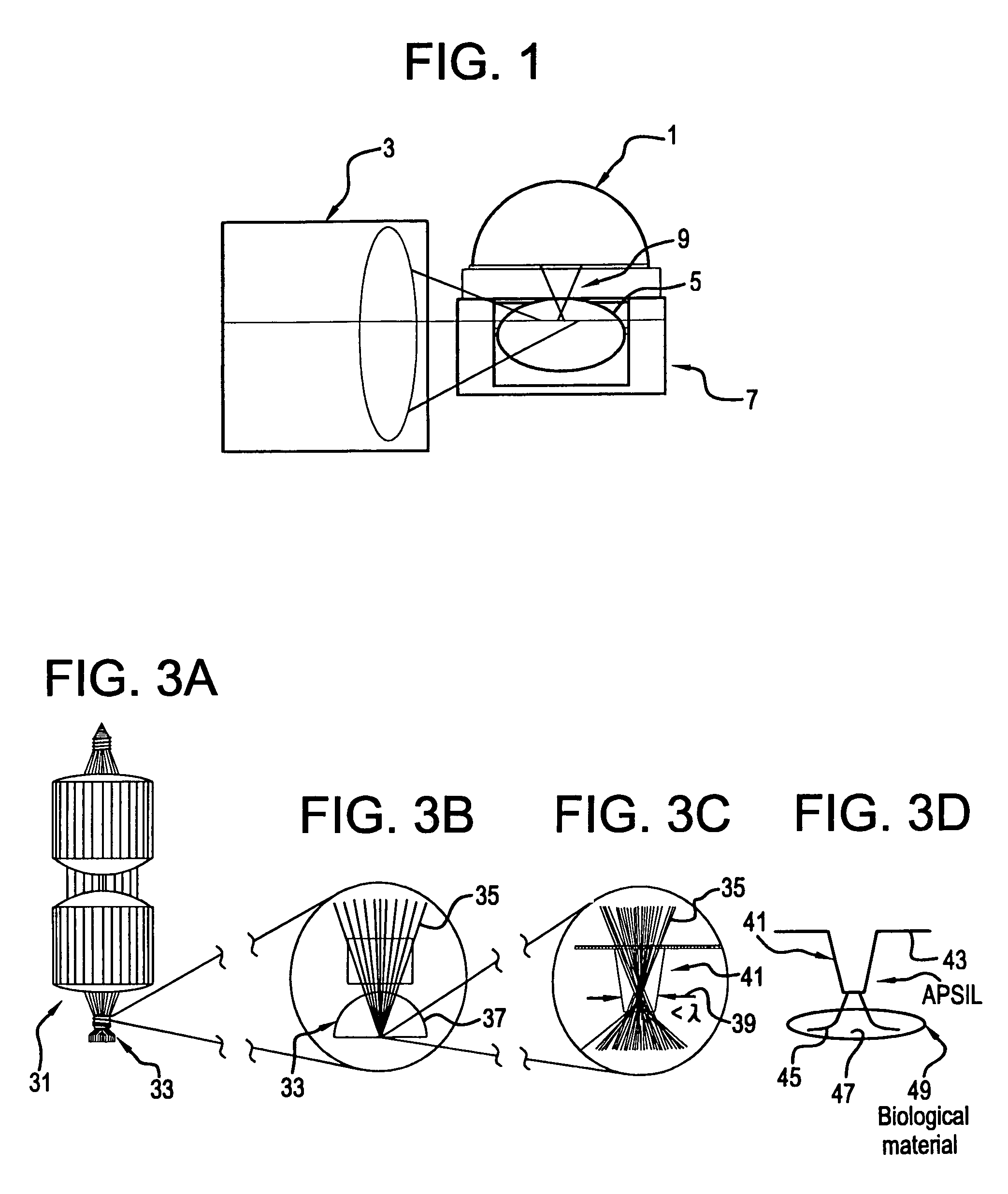Precision optical intracellular near field imaging/spectroscopy technology
a near field imaging and spectroscopy technology, applied in the direction of optical elements, material analysis through optical means, instruments, etc., can solve the problems of cell destruction by electron microscope use, and achieve the optimal impact on biological and medical community, improve the imaging of intact cells, and cost significantly less
- Summary
- Abstract
- Description
- Claims
- Application Information
AI Technical Summary
Benefits of technology
Problems solved by technology
Method used
Image
Examples
Embodiment Construction
[0025]The preferred embodiment is a method for collecting image data on macro-molecules from intact cells by adapting existing SNOM technology. Although there is some documentation on the use of SNOM on biological samples, the technique has not been perfected. This invention enables intact cells to be penetrated and sub-cellular components to be viewed with an adapted SNOM probe, providing new information about the architecture within a cell and it's molecular composition.
[0026]Most molecular studies are conducted outside of the cell and the ability to view molecular processes within intact cells provides more and better information. The non-invasive probe optimally impacts the field of cell biology, as SNOM technology has not yet been applied to intact, hydrated cells.
[0027]FIG. 1 shows the basic configuration of POINT with the relative orientation of the modified near-field microscope 1, the POINT probe 9, and the confocal microscope 3 with respect to the cell 5 and the etched cel...
PUM
 Login to View More
Login to View More Abstract
Description
Claims
Application Information
 Login to View More
Login to View More - R&D
- Intellectual Property
- Life Sciences
- Materials
- Tech Scout
- Unparalleled Data Quality
- Higher Quality Content
- 60% Fewer Hallucinations
Browse by: Latest US Patents, China's latest patents, Technical Efficacy Thesaurus, Application Domain, Technology Topic, Popular Technical Reports.
© 2025 PatSnap. All rights reserved.Legal|Privacy policy|Modern Slavery Act Transparency Statement|Sitemap|About US| Contact US: help@patsnap.com



